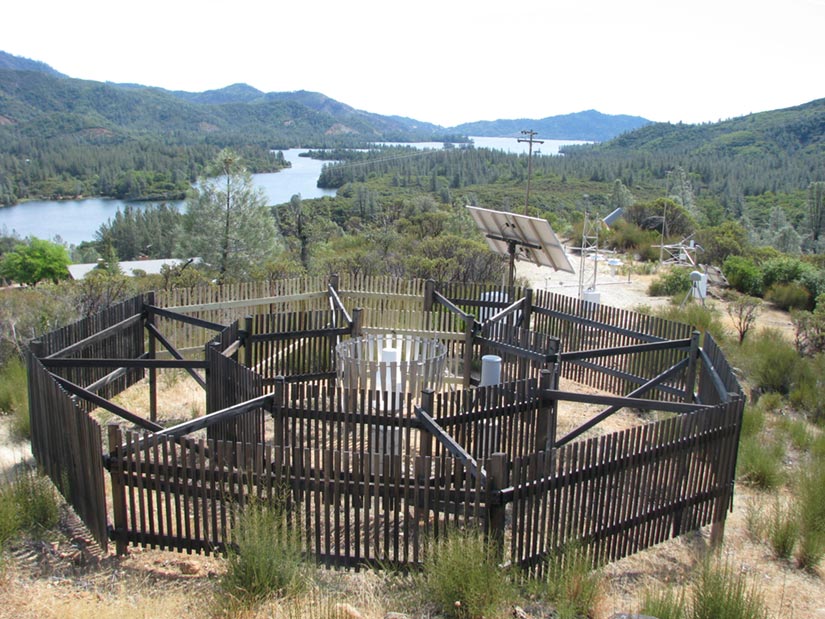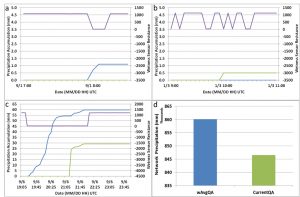
Photograph of USCRN shielded precipitation gauge at Redding, CA.
The U.S. Climate Reference Network (USCRN) is a network of climate-monitoring stations maintained and operated by the National Oceanic and Atmospheric Administration (NOAA) to provide climate-science-quality measurements of air temperature and precipitation.
The USCRN is one of the only networks to observe precipitation from well-shielded gauges (Figure 1) that are capable of taking three independent measurements every five minutes. The current quality assurance (QA) algorithm used to derive a single precipitation total from the three measurements can slightly under-calculate precipitation relative to manual inspection particularly for lighter precipitation events.
Ronald Leeper, CICS-NC, has been actively working with NOAA partners on techniques to improve QA performance. This task has resulted in a QA algorithm with a superior ability to detect lighter precipitation events (Figure 2a), isolate false precipitation (due to gauge noise; Figure 2b), and improve the distribution of accumulation over time (Figure 2c). These enhancements have resulted in a 1.6% increase in observed precipitation across the network relative to the current QA methodology (Figure 2d). The new precipitation algorithm will be applied against all USCRN observations (current and archived), once it completes USCRN acceptance tests.

Accumulated precipitation for new (blue) and current (green) QA algorithms with observed wetness (purple) for a light event in Yuma, AZ (b), false event in Joplin, MO, and intense event in Durham, NC (c) and for all stations (d).
With NOAA scientists, Ronald Leeper is actively examining the impact of assimilating in-situ observations on model performance of both above (e.g. air temperature and precipitation) and below (soil moisture and temperature) ground model variables. In addition, he is collaborating with scientists at the Atmospheric Turbulent Diffusion and Division (ATDD) on the World Meteorological Organization (WMO) Solid Precipitation Intercomparison Experiment (SPICE) to aid in the selection of instrumentation.
Leeper, R. D., Davis, E., and Palecki, M. A, Precipitation quality assurance methods for weighing bucket precipitation gauges having three redundant measurements. American Meteorological Society 92 Annual Conference. 2012 January. Paper196379
